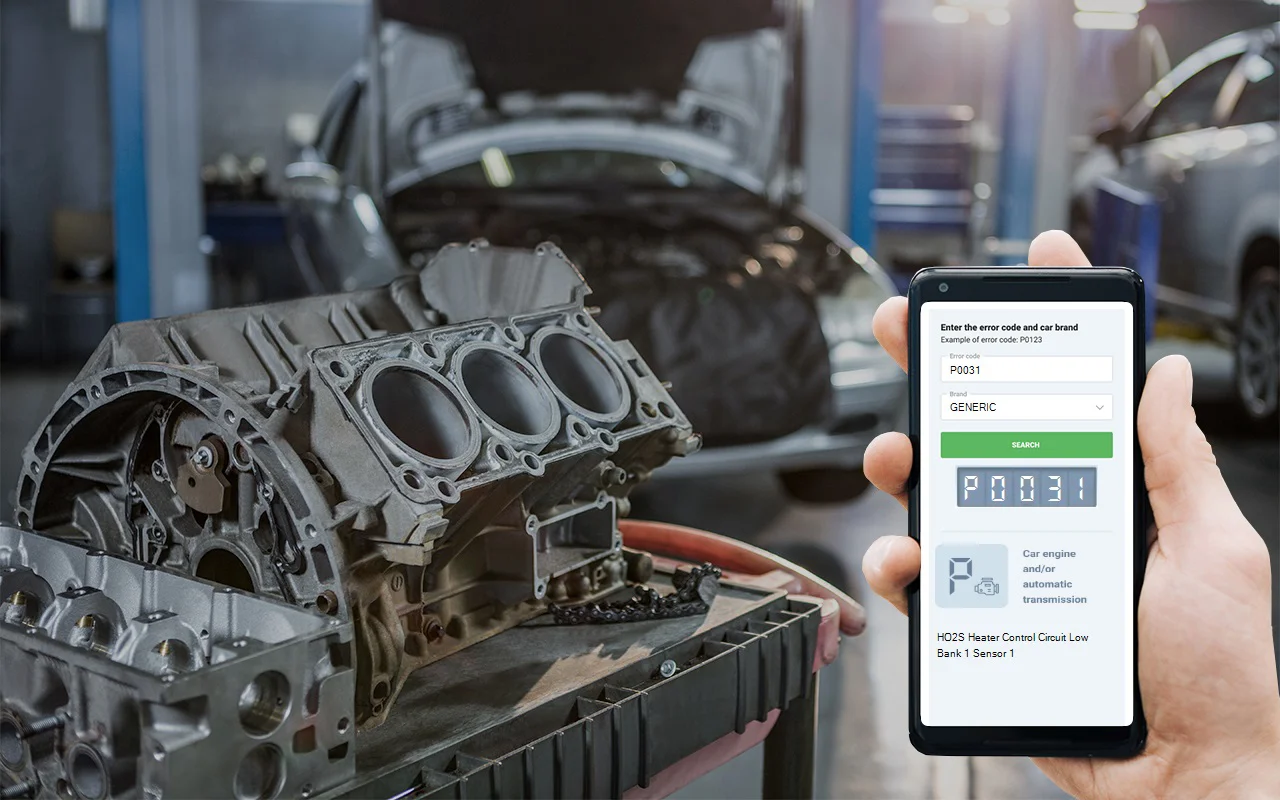Let me break down what the P0031 code actually means for your vehicle. This code stands for “HO2S Heater Control Circuit Low (Bank 1 Sensor 1).” In plain English, your car’s computer is telling us that the heater circuit for the oxygen sensor (the one before the catalytic converter on Bank 1) isn’t working the way it should. The oxygen sensor’s job is to measure how much oxygen is in your exhaust, which helps your engine run efficiently and cleanly. But for the sensor to do its job right, it needs to heat up quickly-especially when you first start the car. That’s where the heater circuit comes in. If the computer sees that the heater isn’t drawing the right amount of power, or the circuit is acting up, it’ll trigger this code. This system is tied directly to how your engine manages fuel and emissions, so it’s not something to ignore. This error can also happen on Nissan, Toyota, and other car brands.
DTC P0031
P0031 code causes
From my experience working on these, there are a few usual suspects when it comes to p0031. Most often the issue is:
- A faulty oxygen sensor itself-the heater element inside can burn out or fail.
- Problems with the wiring or connectors going to the sensor-damaged wires, corrosion, or loose connections are common culprits.
- In rare cases, the car’s computer (PCM) might have a glitch or need a software update, but that’s not as common as a bad sensor or wiring issue.
I recommend starting your checks with the sensor and its wiring, since that’s where we see most problems crop up. For reference, this fault may display as eobd dtc p0031 in some diagnostic tools.
Obd code P0031 symptoms
If this code pops up, here’s what you might notice while driving: the check engine light will definitely come on. Sometimes, you’ll feel the engine isn’t running as smoothly as usual-maybe it hesitates, stumbles, or just doesn’t have the same pep. Another big one is poor fuel economy; you might find yourself filling up more often than normal. In some cases, you might not notice anything except the warning light, but don’t let that fool you-there’s still a problem under the hood. If you see nissan dtc p0031 or toyota dtc p0031, these symptoms still apply for those cars as well.

P0031 diagnosis
Here’s how I usually tackle a P0031 code, step by step:
- First, I always check the basics-make sure the check engine light is on and confirm the code with a scan tool.
- Next, I visually inspect the oxygen sensor and its wiring. Look for any obvious damage: melted wires, frayed insulation, or loose connectors. Don’t forget to check for corrosion inside the connector-it’s a sneaky troublemaker.
- If everything looks good, I use a multimeter to check the resistance of the heater circuit in the sensor. Most OEM specs call for a certain resistance range (usually a few ohms). If it’s way off, the heater inside the sensor is likely shot.
- Then, I’ll check for proper voltage at the sensor connector with the ignition on. If there’s no power, the issue could be further up the harness or even a blown fuse.
- If all the wiring and the sensor check out, only then do I consider the PCM or a software issue, but honestly, that’s pretty rare.
It’s best to have someone assist you if you’re poking around under the hood, and always disconnect the battery before unplugging sensors to avoid accidental shorts. Some scan tools may display dtc p0031 toyota for Toyota vehicles, but the diagnosis process remains the same.

Obd2 code P0031 common mistakes
I’ve seen folks jump straight to replacing the oxygen sensor without checking the wiring or connectors first. That’s a surefire way to waste money if the real problem is just a broken wire or a dirty connector. Another common mistake is skipping the resistance test on the sensor’s heater circuit-don’t assume a new sensor is always good out of the box. And don’t forget to check for blown fuses or relays tied to the sensor circuit; overlooking those can have you chasing your tail for hours.

Dtc P0031 seriousness
This isn’t something you want to put off. While your car might still run, ignoring a P0031 code can lead to bigger headaches. The engine could start running too rich or too lean, which means more fuel burned and higher emissions. Over time, this can damage your catalytic converter-a very expensive part to replace. Plus, poor performance and bad fuel economy are just the start. Honestly, it’s dangerous to ignore this, especially if you rely on your car every day. Things can go south quickly if overlooked.
P0031 engine code repair
Here’s what usually fixes a P0031 code, based on what I see in the shop and OEM procedures:
- Replace the faulty oxygen sensor if the heater circuit is out of spec.
- Repair or replace any damaged wiring or connectors in the sensor circuit.
- Check and replace any blown fuses or faulty relays related to the heater circuit.
- In rare cases, update the PCM software or replace the PCM if it’s confirmed to be the source of the problem (but this is the last resort).
Always clear the code and test drive the vehicle to make sure the fix worked.
Conclusion
To sum it up, P0031 means your car’s oxygen sensor heater circuit isn’t working right, which can mess with engine performance and fuel economy. It’s important to diagnose this promptly-start with the sensor and wiring, since those are the most common issues. Don’t ignore the warning signs, because the risks just aren’t worth it. The most reliable fix is usually replacing the sensor or repairing the wiring, and that gets you back on the road safely and efficiently.




